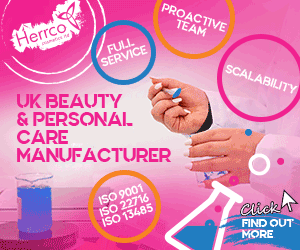Global lockdowns to curb the spread of Covid-19 dramatically changed the beauty industry in 2020. Retail trends already moving in favour of e-commerce, were accelerated, while brands offering colour cosmetics alone found themselves in hot water as buyers abandoned make-up in favour of indulgent at-home treatments.
However, beauty’s year could have been much worse, as Annie Brown, Associate at Brand Finance, the brand valuation and consultancy company that compiles the annual top 50 most valuable cosmetics brands line up, explains.
“Cosmetics has been mixed,” she says. “Overall, the top 50 declined in value by -9% year-on-year, which translates to about US$13bn in brand value that’s been shaved off from the top 50 versus last year.”
In addition to brand rankings by sector and country, Brand Finance compiles an annual global 500 of the most valuable brands across all industries, and Brown notes: “When we compare beauty to other sectors in the global 500 it’s in the middle of the road in terms of year-on-year change. Pharma has grown by an average of 36% year-on-year, while tech has grown by 18% year-on-year. Then, at the other end of the spectrum, leisure and tourism, airlines and hotels, unsurprisingly, suffered massive brand value loss, losing on average -50% of their brand value year-on-year. So cosmetics is really in the middle ground between those two extremes.”
But even within cosmetics, there have been varying fortunes, with Brown revealing that the ranking’s colour cosmetics-driven brands, including MAC, Maybelline and Bobbi Brown, lost -15% off their brand value year-on-year, on average. Multi-level marketing brands (like Avon and Oriflame) dropped -12% on average, meanwhile, and brands operating in hair care, razors and fragrance had an average brand value drop of -10%.
However, the uptick in consumption of at-home pampering products didn’t necessarily mean that the skin, bath and body-oriented brands populating the beauty top 50 enjoyed huge gains.
“Some of the categories in the sector that have been positively impacted, such as skin care, haven’t necessarily benefited the biggest brands in the industry,” notes Brown. “It’s more the smaller start-up brands which are doing something new, particularly ‘clean’ beauty brands, that have been taking away that market share. Some of the brands fitting this description that are big enough to be within the ranking are the ones that have done quite well,” Brown observes, singling out Brazil’s Natura (up 19% in value to reach 25) and LVMH-owned fresh (new in at 36 on the back of a 53% year-on-year leap in value) as examples.




